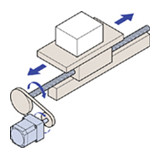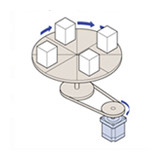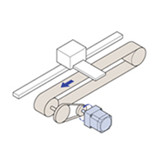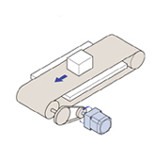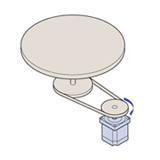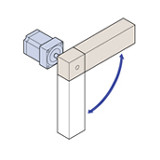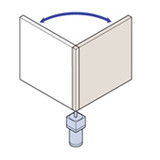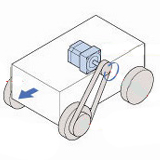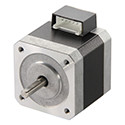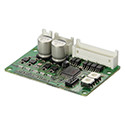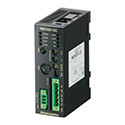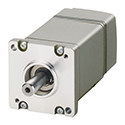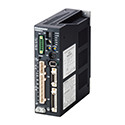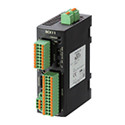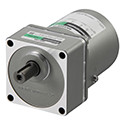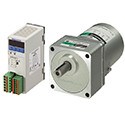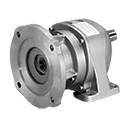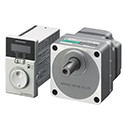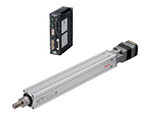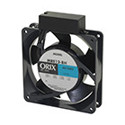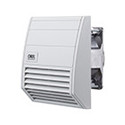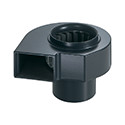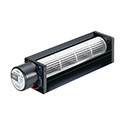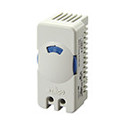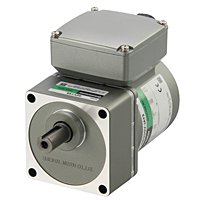Motores CA Glossário de termos
Gearhead
Relação
The gear ratio is the ratio by which the gearhead reduces the motor speed. The speed at the gearhead's output shaft is 1 Relação times the motor speed.
Maximum Permissible Torque
This is the maximum load torque that can be applied to the gearhead. It is dependent upon such mechanical strength factors as the materials of gearheads e bearings, e size. Therefore, it varies according to the gearhead type e gear ratio.
Service Factor
This is a coefficient used to estimate the gearhead life. These values are determined in accordance with the results of life tests under various loads e conditions of use.
Transmission Efficiency
This is the efficiency when the torque is transmitted with the gearhead combined. It is expressed as a percentage (%) e is determined by the friction in the gears e bearings used in the gearhead e the resistance of the lubrication grease. Transmission efficiency is, when using a GN gearhead, usually 90% for one stage of reduction gears, e is 81% for two stage gearheads. As the gear ratio increases, the number of reduction gear stages increases, with a consequent reduction in the gear efficiency to 73% e 66% for each gear stage added.
Overhung Load
This is a load on the gearhead output shaft in the vertical direction. The maximum overhung load on a gearhead shaft is called the permissible overhung load, e it varies with the gearhead type e distance from the shaft end. This is equivalent to tension under belt drive.
Thrust Load
This is the load that is placed in the direction of the gearhead output shaft. The maximum thrust load on the gearhead is called the permissible thrust load, which varies with the gearhead type.
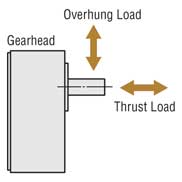
Potência
Potência
The amount of work that can be performed in a given period of time is determined by the motor's speed e torque. Each motor specification indicates the value of rated output power. Output power is expressed in watts orin horsepower.
Potência de saída [Watts] = 1.047 × 10-1 × T × N
1 HP = 746 Watts
where: 1.047 × 10-1 : Constant
T [N·m] : Torque
N [rpm] : Speed
Rated Potência de saída
This term refers to output power generated continuously when the optimal characteristics are achieved at the rated voltage e frequency in continuous operation. The speed e torque that produce the rated output power are called the rated speed e rated torque. Generally, the term "output power" refers to rated output power.
Overrun
Overrun
This is the number of excess rotations the motor makes from the instant the power is cut off to the time that it actually stops. It is normally indicated either by angle orby rotations.
IRatings
Ratings
Motor rating represents the operation limit certified on the motor regarding dynamic characteristics such as temperature, mechanical strength, vibration e efficiency. There are two categories: continuous rating and limited duty rating. Operation limit on output power, as well as voltage, frequency e speed are established. These are known as rated output power, rated voltage, rated frequency and rated speed, respectively.
Continuous e Limited Duty Ratings
The time during which output can continue without abnormality is called a time rating. When continuous operation at rated output is possible, it is known as a continuous rating. When operation at rated output is possible only for a limited time, it is known as the limited duty rating.
Speed
Synchronous Speed
This is an intrinsic factor determined by line frequency e the number of poles.
It is indicated as the speed per minute.
Ns = 120f [rpm]
P
NS : Synchronous speed [rpm]
f : Frequency [Hz]
P : Number of poles
120 : Constant
For example, for a four-pole motor with a line frequency of 60 Hz, the synchronous speed will be:
Ns = 120 × 60 = 1800 [rpm]
4
See (4) in the permissible torque chart.
No Load Speed
This is the speed under no load conditions. The speed of induction orreversible motors under no load conditions is lower than synchronous speed by a few percent (approximately 20 to 60 rpm). See (5) in the permissible torque chart.
Rated Speed
This is the appropriate speed of the motor at rated output power. From the standpoint of utility, it is the most desirable speed. See (6) in the permissible torque chart.
Slip
The following formula is one method of expressing speed:
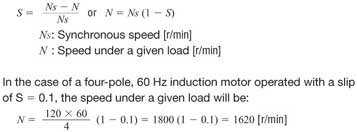
Torque
Starting Torque
This is the torque generated instantly when the motor starts. If the motor is subjected to a friction load greater than this torque, it will not operate. See (1) in the figure below.
Stall Torque
This is the maximum torque under which the motor will operate at a given voltage e frequency. If a load greater than this torque is applied to the motor, it will stall. See (2) in the figure below.
Torque nominal
This is the torque generated when the motor is continuously producing rated output power at the rated voltage e frequency. It is the torque at rated speed. See (3) in the figure below.
Static Friction Torque
Static friction torque is the torque output required to hold a load when the motor is stopped by an electromagnetic brake orsimilar device.
Permissible Torque
The permissible torque is the maximum torque that can be used when the motor is running. It is limited by the motor's rated torque, temperature rise e the strength of the gearhead combined with the motor.
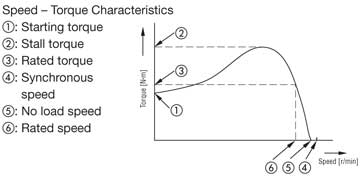
Other Terms
CW, CCW
These show the direction of motor rotation. CW is clockwise as seen from the output shaft, while CCW is counterclockwise.

